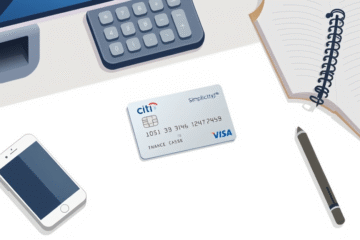How to Get a Student Credit Card Easily
Student Card options are essential financial tools for college students looking to establish credit while managing expenses.
In this article, we will explore the vital aspects of obtaining a student credit card, including the eligibility criteria, necessary documentation, and the best financial institutions offering these cards.
With tailored benefits for students, it’s crucial to understand how to navigate the application process effectively to make the most of these financial products.
Whether you’re new to credit or simply looking for a way to build your financial portfolio, understanding student credit cards can pave the way for future financial success.
Understanding Student Credit Cards
Student credit cards are credit cards specifically designed for college students who have limited or no credit history.
They serve as a financial tool to help students build a credit score while learning to manage their finances responsibly.
Understanding how to acquire a student credit card is important because it lays the foundation for a solid credit profile, which can provide numerous benefits in the future, such as lower interest rates and favorable terms on loans, rentals, and more.
- Eligibility basics
- Key documents needed
- Online application process
By considering information from financial institutions like Discover’s Student Credit Card Guide, students can grasp what it takes to apply for these cards.
Requirements typically include enrollment verification at a college or university and sometimes evidence of income or a co-signer for added security.
With many applications available online, students can easily navigate the process of acquiring a card designed to meet their needs, learning valuable financial habits in the process.
Eligibility Requirements
To qualify for a student credit card, the first criterion involves age.
The minimum age requirement is set at 18 years, ensuring applicants have reached the legal age to enter into a binding contractual agreement, such as a credit card agreement.
This age requirement also aligns with legal adulthood, providing individuals the responsibility needed to manage credit.
Additionally, it ensures that applicants are mature enough to understand the implications of using credit and the importance of maintaining a good credit history.
Enrollment in an educational institution is another crucial requirement.
Enrollment verification confirms that the applicant is actively pursuing higher education, which is a fundamental criterion for accessing student credit cards.
Credit card issuers often tailor student cards to meet the unique financial needs of students, offering benefits like cashback on educational expenses or 0% introductory APRs.
By verifying enrollment, issuers can provide these tailored benefits to their intended audience, ensuring the offers reach the students who need them the most.
Residency also plays a vital role in eligibility.
While most credit card issuers do not have strict residency requirements like some other educational financial aids, there are still considerations surrounding state residence, especially when dealing with benefits that might require applicants to be U.S. residents.
Proof of residency might be needed to confirm the applicant’s ability to engage financially within the country’s banking system.
By requiring certain residency documentation, credit card issuers can comply with federal regulations and minimize issues related to creditworthiness and the applicant’s ability to manage financial commitments responsibly.
Necessary Documents and Income Proof
When applying for a student credit card, you need to gather specific documents to ensure a successful application.
Typically, you should provide a valid student ID and proof of enrollment from your educational institution.
These confirm your current status as a student, which is essential for eligibility.
Additionally, proof of income, such as recent pay stubs or a tax return, is often required for income verification.
If you lack sufficient income, finding a co-signer, generally a parent or guardian, is vital to enhance your application’s strength.
A co-signer should supply their financial documents, including bank statements and proof of income.
According to Discover’s student income requirements, having these documents prepared helps expedite the application process, ensuring you meet the lender’s criteria effectively.
Monitoring document requirements and preparing accordingly streamlines the path to obtaining your student credit card.
Leading Student Credit Card Providers
Student credit cards play a pivotal role in helping college students build credit histories and manage their finances responsibly.
Here’s a comparison of some leading financial institutions offering these cards:
Bank Key Feature Eligibility Highlight Discover No annual fee and rotating cash back categories Requires proof of student status Capital One Unlimited 1.5% cash back on all purchases Doesn’t require a co-signer for approval Bank of America Travel Rewards with no foreign transaction fees Enrollment in educational institution required Chase Flexible credit limit options Requires income verification Wells Fargo Cash back for good grade incentives No credit history required
Choosing the right credit card can significantly impact a student’s financial journey.
Discover’s no fee card with cash back potential stands out for those seeking flexible rewards.
Meanwhile, Capital One’s student card offers easy cash back without annual fees.
Bank of America’s card, available on their website, provides robust travel rewards.
It’s essential to weigh these perks against personal eligibility to make an informed decision.
Building credit responsibly through these student cards sets the foundation for future financial health.
Online Application Walkthrough
Initiating the student credit card application online requires careful attention to detail and preparation.
Begin by researching and selecting the ideal card tailored for your needs, such as options from Discover Student Credit Cards.
- Gather required documents, ensuring you have proof of enrollment and income readily available for a seamless process.
- Visit the official website of the financial institution offering the student credit card, such as Capital One.
- Complete the online application form by filling in your personal details accurately, making use of any additional information fields to enhance your application.
- Review the entered information thoroughly to avoid inaccuracies that could negatively impact your application.
- Submit the completed application promptly and monitor your email for any follow-up instructions or notifications regarding your application status.
- Finally, verify that the card issuer reports to all major credit bureaus to begin building your credit history effectively.
Following these steps can increase the likelihood of successfully obtaining a student credit card.
In conclusion, student credit cards are a valuable resource for young adults starting their financial journey.
By understanding the requirements and benefits, students can make informed decisions that contribute to building a strong credit history.



0 Comments